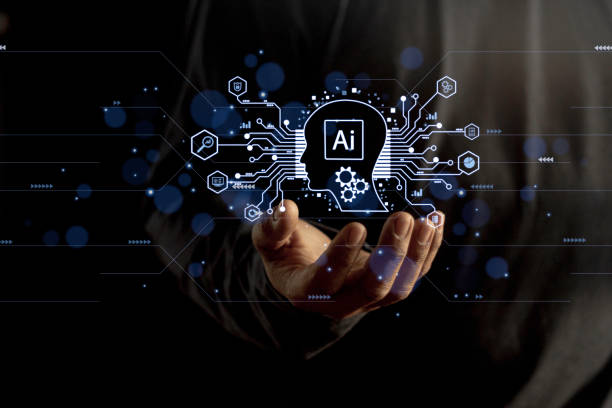Introduction to SEO and Its Fundamental Importance

In today’s highly competitive world, online presence is not limited to just having a website; rather, visibility and interaction with the target audience are essential for the survival and progress of any business.
#SEO, or Search Engine Optimization, is a set of techniques and strategies that help your website achieve higher rankings in the search results of Google and other search engines.
This process goes beyond simple #technical knowledge and requires a deep understanding of search engine #algorithms, user behavior, and market competitiveness.
The importance of SEO lies in increasing organic traffic, improving brand credibility, and ultimately, boosting sales and revenue.
Websites that achieve top rankings attract the most clicks and are considered authoritative and reliable sources.
Therefore, investing in search engine optimization is not just an expense, but a strategic investment for the future of your business.
In the rest of this article, we will explanatorily delve into various aspects of SEO and provide practical solutions to improve your online presence.
This comprehensive approach will ensure the achievement of your long-term goals in the digital world.
Don’t have a corporate website yet and missing out on online opportunities? With professional corporate website design by Rasawp,
✅ Double your business credibility
✅ Attract new customers
⚡ Free consultation for your corporate website!
Types of SEO and Their Key Differences
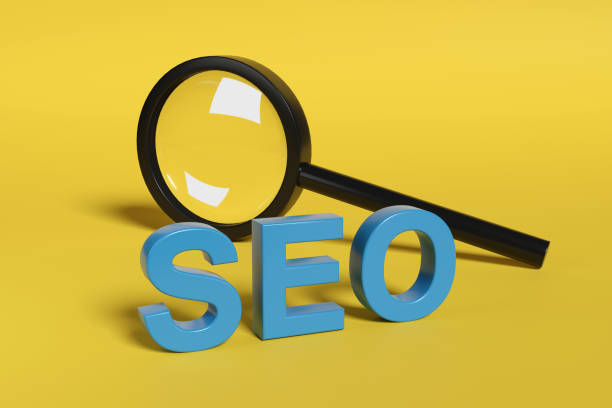
To gain a comprehensive understanding of SEO, it is essential to become familiar with its main types and their key differences.
Search Engine Optimization is generally divided into three main categories: On-Page SEO, Off-Page SEO, and Technical SEO.
Each of these sections plays a vital role in improving your website’s ranking and complements the others.
On-Page SEO involves all actions taken within your website to improve its ranking, including keyword optimization, content structure, title tags and meta descriptions, image optimization, and URL structure.
The main goal of On-Page SEO is to help search engines better understand the content of your pages and their relevance to user search queries.
On-Page SEO makes your content more understandable for both users and search engine crawlers.
Off-Page SEO refers to actions taken outside your website aimed at increasing its authority and domain credibility.
The primary component of Off-Page SEO is building high-quality backlinks from other reputable websites.
These backlinks signal to search engines that your website is a reliable and valuable resource.
Social media activity and content marketing can also indirectly influence Off-Page SEO.
Technical SEO deals with the technical aspects of your website that affect its crawlability and indexability by search engines.
Website loading speed, mobile-friendliness, sitemap structure, robots.txt file, and website security (HTTPS) are among the important factors in Technical SEO.
A website with a strong technical infrastructure provides a better user experience and makes it easier for search engines to discover and rank pages.
Understanding these distinctions is crucial for developing a comprehensive and effective SEO strategy.
This explanatory section lays the foundation for understanding the complex SEO process.
Keyword Research, The Cornerstone of SEO and Targeted Traffic Attraction
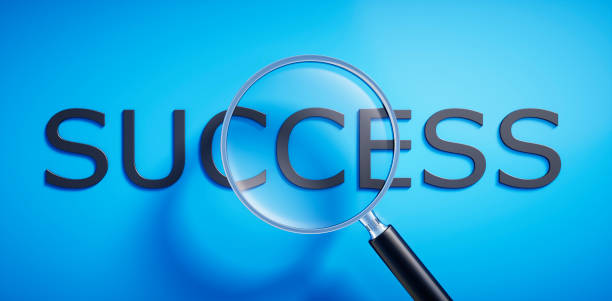
Keyword research is the first and most vital step in any successful SEO strategy.
This specialized process involves identifying the words and phrases your target audience uses in search engines to find the products, services, or information you offer.
Without accurate keyword research, all your subsequent SEO efforts may prove fruitless.
The goal is to find keywords that not only have a good search volume but are also relevant to your website’s content and have acceptable competitiveness.
There are various types of keywords, from short and general (Short-tail) keywords to long and specific (Long-tail) keywords.
Longer keywords typically have lower search volume but better indicate user intent and have higher conversion rates.
For keyword research, various tools are available, such as Google Keyword Planner, Ahrefs, Semrush, and Moz Keyword Explorer, which help you discover new keywords, analyze competition, and check search volume.
At this stage, you should also pay special attention to user search intent; Is the user looking for information (Informational), intending to buy (Commercial), looking to navigate a specific site (Navigational), or intending to research and compare (Transactional)? Your content must align with user intent to achieve a better ranking.
A key guidance is to always look for new keyword opportunities and regularly update your list.
Continuous keyword research helps you stay one step ahead of competitors and drive higher quality traffic to your website.
This is the foundation of all subsequent actions in the field of website optimization for search engines.
| Keyword Type | Description | Example | User Intent |
|---|---|---|---|
| Short-tail Keywords | General, broad, high search volume, intense competition | SEO, shoes, laptop | Unspecified, initial |
| Long-tail Keywords | Specific, precise, low search volume, less competition, high conversion rate | WordPress SEO Tutorial 2024, buy men’s athletic shoes size 42, best laptop for programming | Specific, final (Informational, transactional) |
| Informational Keywords | User is looking for information | What is SEO?, How to play piano? | Knowledge acquisition |
| Commercial Keywords | User is looking to review products/services for purchase | Samsung phone review, Linux hosting comparison | Pre-purchase research |
| Transactional Keywords | User intends to buy or perform a specific action | Buy laptop online, Download WordPress theme | Purchase, action |
Optimized and Engaging Content Creation for Users and Search Engines
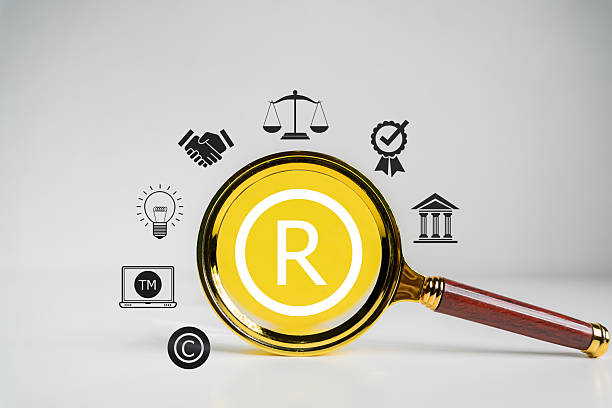
Creating high-quality and optimized content is the beating heart of any SEO strategy.
Content must not only be understandable to search engines but also fulfill user needs and answer their questions.
Your content should be thought-provoking, meaning it should pique the user’s curiosity and compel them to read more.
This includes blog articles, product pages, guides, infographics, and videos.
When creating content, intelligent use of keywords identified in the previous stage is very important, but keyword stuffing should be avoided, as this disrupts user experience and can lead to penalties from search engines.
Good content should also be engaging; even on technical topics.
This means using an attractive tone, appropriate visual structure (such as using images and videos), and short, readable paragraphs.
Search engines are increasingly prioritizing user engagement signals, such as Dwell Time, Bounce Rate, and the number of pages visited per session.
Content that engages users and encourages them to stay longer on the site and interact with it sends positive signals to search engines.
Furthermore, your content must be unique, accurate, and provide added value to the audience.
Copying content from other sites not only harms your ranking but also destroys your credibility.
Regularly updating old content and adding new information also helps maintain the freshness and relevance of your content and can significantly impact your SEO performance.
Creating content that is appealing to both humans and search bots is an art and a science acquired over time and with experience.
Are you bothered by losing customers due to your e-commerce site’s outdated appearance or slow speed? Rasawp’s expert team solves these issues with professional e-commerce website design!
✅ Increase customer trust and brand credibility
✅ Stunning speed and excellent user experience
Get a free consultation with Rasawp now ⚡
Technical SEO and Strong Infrastructure
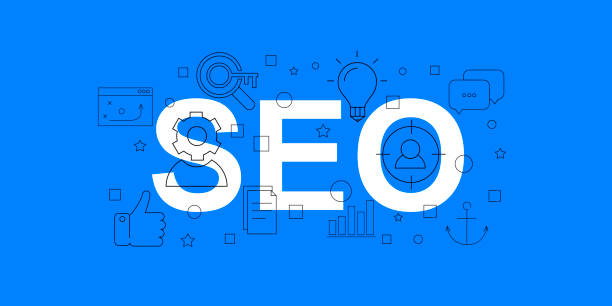
Technical SEO is one of the fundamental pillars of website optimization that is often overlooked but plays a vital role in your website’s crawlability, indexability, and ranking by search engines.
This part of SEO involves optimizing the technical aspects of your website to improve user experience and help search engines better understand the site’s structure and content.
One of the most important technical SEO factors is website loading speed.
Slow websites not only provide a poor user experience but are also penalized by search engines.
Using image compression, caching, code optimization, and a reliable hosting provider can significantly improve your site’s speed.
Mobile-Friendliness is also of high importance, as a large portion of searches are performed via mobile devices.
Google uses a ‘Mobile-First Indexing’ approach, meaning it prioritizes the mobile version of your website for indexing and ranking.
Having a Responsive Design that adapts well to all screen sizes is essential.
Other aspects of technical SEO include optimizing site structure (such as using breadcrumbs and internal links), creating and submitting XML Sitemap files to guide search engines in crawling your pages, using a robots.txt file to control crawler access, and implementing an SSL certificate (HTTPS) for website security.
These explanatory and foundational elements ensure that search engines can easily access and index your content, which is a crucial step towards achieving top rankings in search results.
Backlinks and Domain Authority (Off-page SEO) for Increasing Site Power
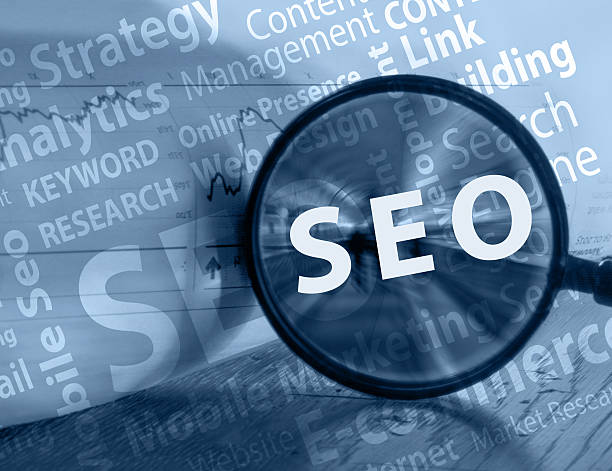
Backlinks, or inbound links, are the backbone of Off-page SEO and play a crucial role in increasing domain authority and, ultimately, improving your website’s ranking.
Simply put, a backlink means a link from another website to your website.
Search engines, especially Google, consider backlinks as a ‘vote of confidence’ or ‘referral’ from other websites.
The more numerous and higher quality the inbound backlinks to your site, the more authoritative and trustworthy search engines will consider your site.
But not all backlinks are created equal.
The quality of backlinks is far more important than their quantity.
A backlink from a reputable, relevant, and high-domain authority website (such as a famous news site or an industry authority) is worth much more than several backlinks from low-authority or spammy sites.
Backlink building strategies include creating highly valuable content that naturally attracts links (link bait), participating in relevant forums and blogs, providing guest content on other sites, and digital public relations.
This process requires a precise analysis of competitors’ backlink profiles and identifying new opportunities to acquire links.
Also, you should be wary of toxic and spammy links that can harm your SEO ranking.
Regularly reviewing your backlink profile using tools like Google Search Console or Ahrefs to identify and disavow harmful links (disavow) is essential.
In addition to backlinks, social media activity and brand mentions in the online space (Brand Mentions) can also indirectly affect your Off-page SEO, as these activities help increase your brand’s visibility and authority.
Building a healthy and strong backlink profile is a time-consuming and ongoing process that is essential for long-term SEO success.
Local SEO and Its Strategies for Local Businesses

Local SEO is a subset of search engine optimization that focuses on improving the visibility of businesses in local search results.
This type of SEO is especially crucial for physical businesses such as restaurants, stores, clinics, and other services whose customers are primarily located in a specific geographical area.
The main goal of local SEO is for your business to appear in search results (usually in the ‘Google Maps’ section or ‘local pack’) when users are looking for products or services near them.
The most important tool for local SEO is Google My Business (GMB).
Accurate registration and optimization of your GMB profile, including completing contact information, business hours, services offered, high-quality images, and collecting customer reviews, plays a key role in visibility in local searches.
In addition to GMB, other factors also influence local SEO.
Consistency of NAP (Name, Address, Phone Number) information across all online directories and local websites (Citations) is extremely important.
Any inconsistency in this information can confuse search engines and reduce your ranking.
Also, online reviews and customer ratings play a prominent role in local SEO; the more positive reviews you have, the more trust users and search engines will place in you.
Optimizing your website for local keywords (e.g., ‘best restaurant in Tehran’ or ‘computer repair technician Isfahan’) and creating content relevant to your geographical area are also effective strategies.
A practical tip is to use geo-tagged images in your GMB profile and ensure your website is mobile-optimized, as most local searches are performed on mobile phones.
Local SEO is a unique opportunity for small and medium-sized businesses to gain an edge in their market and attract local customers.
| Factor | Description | Importance |
|---|---|---|
| Google My Business (GMB) Profile | Accuracy and completeness of information, images, posts, reviews | Highest |
| Name, Address, Phone (NAP) | Consistency of business information across all online directories | Very High |
| Online Reviews and Ratings | Quantity and quality of customer reviews, responding to them | Very High |
| Local Links | Backlinks from reputable local websites, chambers of commerce | High |
| Local Keywords | Use of geographically relevant keywords in content | Medium to High |
| Site Mobile-Friendliness | Website optimization for mobile devices | High |
| User Behavioral Signals | Click-through rate, time on site, directions to business | Medium |
Practical SEO Tools and Performance Analysis for Professionals

In the complex world of SEO, using appropriate tools for analyzing, tracking, and optimizing website performance is essential.
These tools help SEO professionals and even business owners gather valuable data and make more informed decisions.
Some of these tools are educational and help users understand complex concepts, while others are specialized and designed for deeper analysis.
Google Search Console (GSC) is one of the free and vital tools provided by Google itself.
This tool helps you monitor your website’s performance in Google search results, identify crawling and indexing issues, and even disavow harmful links.
GSC provides information about the keywords users have used to find you, popular pages, and the technical health of your site.
Another very important tool is Google Analytics (GA), which provides a comprehensive view of user behavior on your website.
With GA, you can track the number of visitors, their time on site, visited pages, traffic sources, and conversion rates.
Combining GSC and GA data allows you to have a complete picture of your SEO performance.
Paid tools like Ahrefs, Semrush, and Moz are also available in the market, offering more advanced features including in-depth keyword research, competitor analysis, backlink profile review, and rank monitoring.
These tools are very useful for larger-scale SEO strategies or for professionals who need more precise and comprehensive data.
Choosing the right tool depends on your budget, skill level, and specific needs, but using any of these tools can significantly help improve your search engine optimization strategies.
Does your current e-commerce site design not generate the expected sales for you?
Rasawp is an expert in professional e-commerce website design!
✅ An attractive and user-friendly site aimed at increasing sales
✅ High speed and security for an ideal shopping experience⚡ Get a free online store design consultation with Rasawp!
Challenges and Future of SEO in the Changing Digital World

The world of SEO is constantly changing and evolving.
What is considered an effective strategy today might become obsolete tomorrow.
This dynamism creates numerous challenges for SEO professionals, but at the same time, it also brings new opportunities.
One of the biggest challenges is Google’s frequent algorithm updates.
Google continuously updates its algorithms to provide more accurate and relevant search results to user needs.
These updates can significantly impact website rankings and necessitate continuous monitoring and adaptation of SEO strategies.
Staying informed about these updates from reliable sources and analyzing their effects on your website is essential.
The future of SEO is heavily influenced by advancements in Artificial Intelligence (AI) and Machine Learning.
Google’s algorithms like RankBrain, BERT, and MUM indicate a shift towards a deeper understanding of natural language and user intent.
This means that content should not only include keywords but also comprehensively and completely answer user questions and provide an excellent user experience.
Precise analysis of user behavior and predicting their future needs will become increasingly important.
Voice Search and Visual Search are also significant future trends in SEO, creating the need to optimize content to respond to these types of searches.
Finally, focusing on User Experience (UX) and Core Web Vitals (which address website speed, responsiveness, and visual stability) will be of high importance.
SEO professionals must constantly learn and adapt to these changes to succeed in this competitive environment.
Conclusion and Next Steps in the SEO Journey

Throughout this article, we comprehensively examined various dimensions of SEO; from its fundamental importance in online visibility to its different types, keyword research, optimized content creation, technical SEO, backlinks, local SEO, and practical tools.
What is clear is that SEO is a complex and ongoing process that requires patience, continuous monitoring, and adaptation to changes in search engine algorithms.
SEO success does not happen overnight; rather, it is the result of sustained efforts and a well-defined, intelligent strategy.
The ultimate goal of SEO is not only to achieve high rankings in search results but also to increase quality traffic and ultimately convert this traffic into loyal customers.
To take the next steps in the search engine optimization journey, it is recommended that you first perform a comprehensive analysis of your website’s current status.
Identify your strengths and weaknesses and develop a step-by-step action plan.
Remember that search engine optimization is a long-term investment that will yield significant rewards.
Always focus on creating valuable and user-centric content, keep your website’s technical infrastructure optimized, and seek to build high-quality backlinks.
Furthermore, continuous monitoring of website performance using analytical tools and updating your knowledge in the field of SEO, is of high importance.
By implementing these guidelines, you can strengthen your online presence and achieve your business goals.
This comprehensive strategy will pave your way for sustainable success in the digital ecosystem.
Frequently Asked Questions
| Question | Answer |
|---|---|
| What is SEO? | SEO, or Search Engine Optimization, is a process of increasing the quality and quantity of website traffic by improving the site’s ranking in natural (organic) search engine results like Google. |
| What are the main types of SEO? | SEO is divided into three main categories: On-Page SEO, Off-Page SEO, and Technical SEO. |
| What does On-Page SEO include? | On-Page SEO involves optimizing elements within the website, such as keywords, Title Tags, Meta Descriptions, content, URL structure, images, and internal links. |
| What is Off-Page SEO? | Off-Page SEO refers to activities outside the website that help improve its ranking, such as Backlink Building, social media marketing, and Brand Mentions. |
| What is Technical SEO? | Technical SEO deals with optimizing the technical aspects of a website to help it crawl and index better by search engines. This includes site speed, mobile-friendliness, site structure, Sitemaps, and the Robots.txt file. |
| What role do Keywords play in SEO? | Keywords are phrases that users enter into search engines. Proper and targeted use of relevant keywords in content and site elements helps search engines understand the topic of your page and display it for relevant searches. |
| What is a Backlink and why is it important? | A backlink, or inbound link, is a link from one website to another. Backlinks act as a “vote of confidence” from other sites for search engines and play an important role in site authority and ranking, especially if they are from reputable sites. |
| What impact does quality content have on SEO? | High-quality, relevant, comprehensive, and unique content not only attracts and retains users but also shows search engines that your page is valuable. This helps improve rankings, reduce Bounce Rate, and increase user time on site. |
| Why is site loading speed important for SEO? | Site loading speed is an important ranking factor for Google. Faster sites provide a better user experience, have lower bounce rates, and are preferred by search engines. |
| Is SEO a one-time process? | No, SEO is an ongoing and long-term process. Search engine algorithms are constantly changing, competition is increasing, and site content also needs updating. Therefore, SEO requires continuous monitoring, analysis, and optimization. |
And other services of Rasa Web Advertising Agency in the field of advertising
Smart Advertising Campaign: A specialized service for growth in campaign management based on marketing automation.
Smart UI/UX: An innovative service to increase user engagement through SEO-driven content strategy.
Smart Direct Marketing: A professional solution to improve SEO ranking with a focus on attractive user interface design.
Smart Marketplace: A fast and efficient solution to increase website traffic with a focus on intelligent data analysis.
Smart Sales Automation: A professional solution for online growth with a focus on precise audience targeting.
And over hundreds of other services in the field of internet advertising, advertising consulting, and organizational solutions
Internet Advertising | Advertising Strategy | Advertorial
Sources
Comprehensive SEO Article for Beginners
Latest SEO Trends in 2024
On-Page SEO Guide
Effective Link Building Strategies
? With Rasawp Afarin, specialists in secure website design and innovative digital marketing strategies, achieve your business goals precisely.
📍 Tehran, Mirdamad Street, Next to Central Bank, Southern Kazeroun Alley, Ramin Alley No. 6


